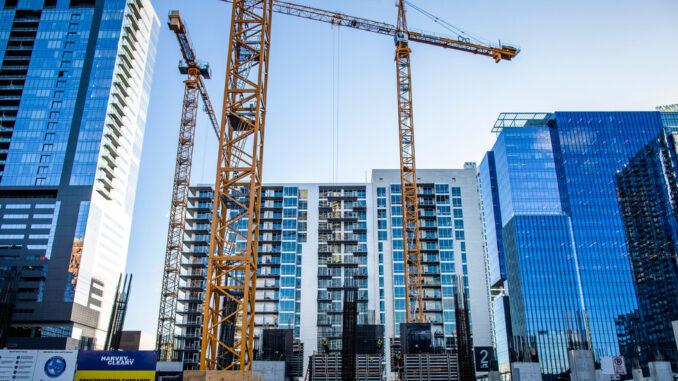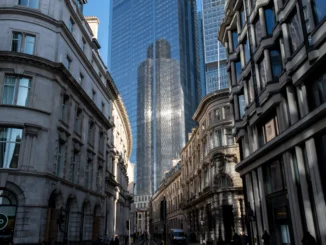
Trouble in the commercial real estate sector — including office buildings across the country that stand largely unoccupied — is a possible risk to the U.S. financial system, according to the Federal Reserve’s latest Financial Stability report released on Monday.
Why it matters: A huge shift in where white-collar staff decides to work is rippling through the commercial real estate market, with warnings that sharp drops in property valuations will follow as office space demand slumps.
- That could spell trouble for the already battered financial sector, with uncertainty about the ultimate effect on the economy
What they’re saying: “[T]he magnitude of a correction in property values could be sizable and therefore lead to credit losses” for holders of commercial real estate debt, officials write in the “Financial Stability Report.”
- The Fed also said that the sharp jump in borrowing costs over the past year increases the risk that commercial mortgage borrowers won’t be able to refinance their loans as they come due.
The intrigue: Worries about the sector prompted officials to more closely monitor the performance of commercial real estate loans, a disclosure made public in the report — which, unlike the last report, features a special section on commercial real estate-related risks.
- The Fed’s bank supervisors — those charged with day-to-day oversight of lenders — also have “expanded examination procedures” for banks with “significant” exposure to commercial real estate.
Details: Mortgages for non-farm, non-residential commercial real estate — which includes offices — are a small slice of total assets held by banks, according to the Fed. But those mortgages represent one-fifth of total assets for the smallest banks (with some of those firms, of course, having more exposure than others).
- But the Fed also acknowledges something of a blind spot on assessing the health of the market: Banks hold roughly 60% of these loans, but there’s limited information on how the loans held by other entities (besides banks) are performing, the report said.
What to watch: The Fed’s quarterly survey of loan officers, released yesterday, suggests that banks are more wary than they have been in years about extending credit for commercial real estate projects — a shift that has accelerated since early 2022.
- Loan standards are now nearly the tightest since at least the 2008 global financial crisis — outmatched only during the onset of the pandemic.
- Demand for these loans, meanwhile, has collapsed: the share of banks reporting stronger demand fell to the lowest on record.
The bottom line: In a survey that accompanied the Fed’s stability report, commercial real estate was mentioned by some market participants as a “possible trigger for systemic risk” — making the list of top-cited concerns, alongside inflation, banking sector stress and the debt limit.



